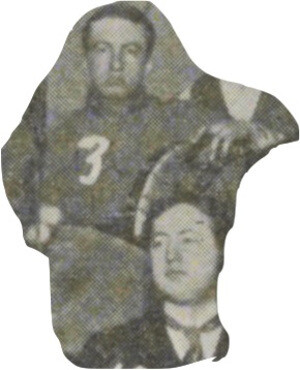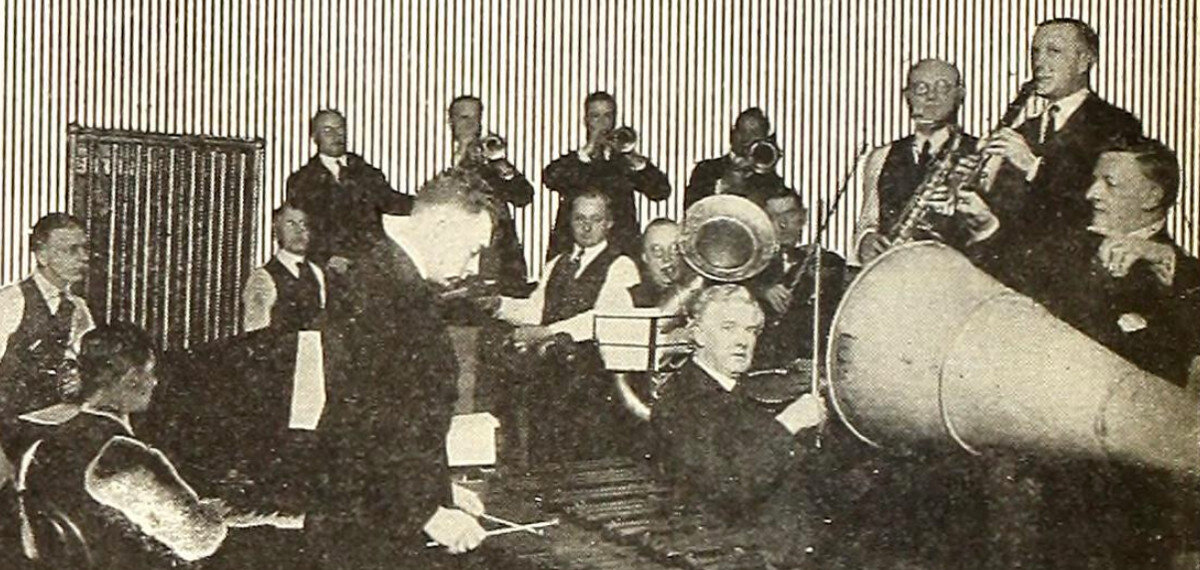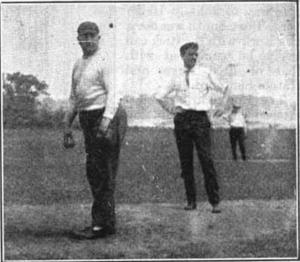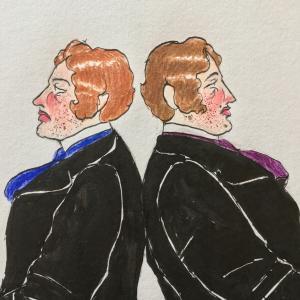In this column, I often speak of the studio pianists that were the driving force on thousands of records made from 1889 to 1925. Perhaps an equally important aspect to many records of this period would be the drums. We know of Eddie King as the iron-fisted drummer and later studio manager for Bix Beiderbecke, but King was not the only interesting musician there at the back of the orchestra on all those records. Eddie King joined Fred Hager’s orchestra around 1904, quite later on in Hager’s bandleading career. Hager clearly must have had a percussionist before King, and he did.
Hager’s drummer was his own younger brother James. The record folks called him Jimmy, and that name stuck for many years.
James Alexander Hager was born in February of 1882, nearly eight years after his brother Fred. James was the youngest of the Hagers and seemed behind his more successful and older siblings. Fred and his two sisters Lena and Georgiana were beloved by all, but from a young age, it was clear James was the black sheep. Fred had shown musical talent from before age 10, and around age 17 he got a full scholarship to the New York Conservatory, leaving James and the sisters behind. Little is known about James, though it is likely that his talent on percussion was more innate and natural than brother Fred’s violin playing.

When Fred started making records, he wanted to make sure that James was up to speed on the recording process and with his ability to keep time. James was only 16, but his talent was substantial. In 1900, James moved along from Edison to Zon-O-Phone, and continued to pound away at the drums on many hundreds of Hager’s orchestra and later Columbia orchestra records. He followed his brother’s every move, moving from one record company to the next, and even heeded his brother’s word and got married at age 20.
In 1902 James married a woman named Isabella, who at the time was only 18. They lost their first child, but to the delight of the entire family, the only grandson was born in 1907. This very much pleased father Melvin and mother Annie, as Fred had three daughters. At this time, James and Isabella were living with brother Fred, residing in an adjacent apartment with his wife and house servant. It is likely that their early years of marriage were difficult and ridden with bitterness, as Fred was very domineering and couldn’t keep his mouth shut. At this time Fred was working his way out of recording and into the publishing business, with his eye on the popular composer and performer J. Fred Helf.
While living with Fred he managed to keep a steady job with Edison and likely the Hawthorne and Sheble labels. Around 1906 and 1907 James’ name shows up in a few Edison monthly supplements, as half of a bells and xylophone duet. In catalogs and supplements he was known as J. Hager, this abbreviation of his name goes back to as early as 1902 when he appeared in a few studio orchestra group photos.
By 1910, James had finally moved away from Fred, though he lived close by, as they all still lived in the Bronx. Around this time, James was working for Edison, not following brother Fred to Boston to work for the newly formed Phono-Cut record label. His exact whereabouts from 1910 to 1917 are difficult to track, but it is very likely that he worked for his brother Fred once again from 1914 to 1917 at the Rex label in Philadelphia. If this is true, the few records banjoist Fred Van Eps made with Frank Edgar Banta would include Hager’s very precise drumming.

Around 1912 to 1915, Fred wrote a bunch of very percussion-heavy pieces, such as an entire suite called The Toyland Suite. This included a pair of pieces called “Rag-time in a Toy Shop” and “Christmas Morning with the Kiddies,” which really got to show off the prowess and timing of his brother’s drumming and sense of novelty. These pieces were recorded on all the major labels of the ’teens.
In 1918, James moved along while working in a temporary job as an orchestra pit drummer to follow brother Fred once again. It was to the Otto Heinemann phonograph supply company he went, later to become the famous Okeh record label. It was from this time on where Jimmy began to show up in record ledgers all over. He was playing in the Rega Orchestra, playing all the various percussion instruments, once again under the rule of brother Fred.

It was around this time that he shows up in recording media, such as large gatherings like picnics and field days. One source from 1921 included a picture of him in his baseball rags with a glove in hand, pitching with famous cornetist Henry Higgins, of Sousa’s band, watching from behind. From the way the papers talked about him, he was a well known background figure in the recording studios, it seems like everyone knew him and knew of his solid talent.
By the mid-1920s, Jimmy was working for several companies, likely trying to get away from brother Fred at Okeh, who at this time was on his way out of recording. Jimmy shows up in Victor, Columbia, and Okeh ledgers from 1925 to 1929, playing various instruments including church chimes. After the beginning of the depression, Jimmy disappears from recording, though it is likely that some of his old studio pals like Justin Ringleben and Eddie King got him some kind of work on the radio. Times were difficult for Jimmy, the depression hit him hard, and his son Melvin had little direction in life, even at around age 25.

Jimmy’s draft card for the second world war is the only other source that can be traced on him after 1930. This card is dated to 1942, when he was just about 60 years old. Unfortunately he died the next year. And from there he went into obscurity, with those memories of thousands of records seemingly dying with him. It seems that Jimmy was troubled, always trailing behind Fred, and being forced to follow his every move, though they all knew Jimmy had the real natural talent.
Fred’s neglected brother does not show up in his scrapbook and papers, which is not really surprising, but a bit frustrating to a researcher on this matter. It is likely that the two brothers did not get along well—just well enough to keep working in recording studios together. He may be forgotten and was torn out of the pages of recording history, but we can still hear him pounding away and keeping the fabric together on thousands of Zon-O-Phone and Columbia records.
R. S. Baker has appeared at several Ragtime festivals as a pianist and lecturer. Her particular interest lies in the brown wax cylinder era of the recording industry, and in the study of the earliest studio pianists, such as Fred Hylands, Frank P. Banta, and Frederick W. Hager.






















